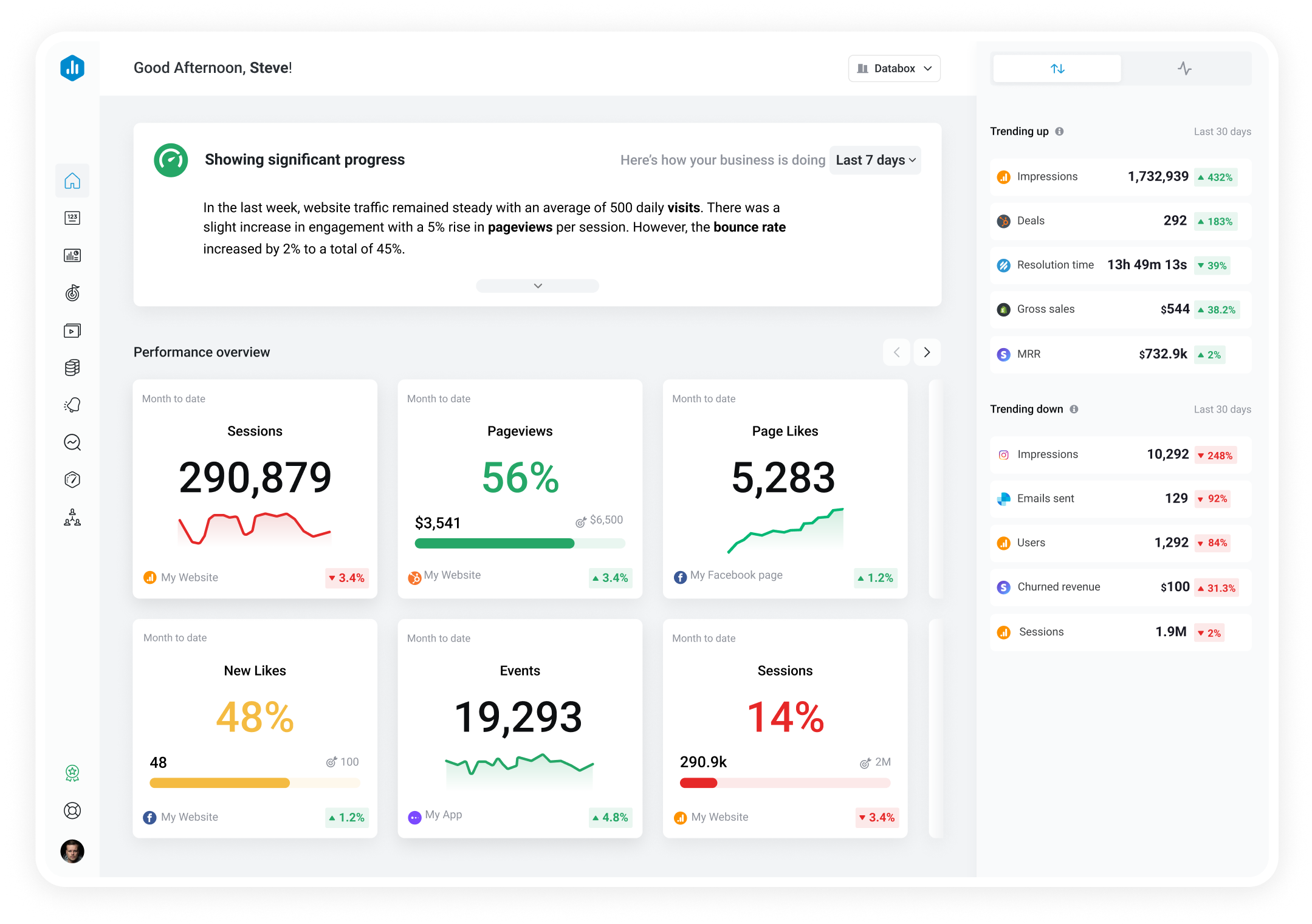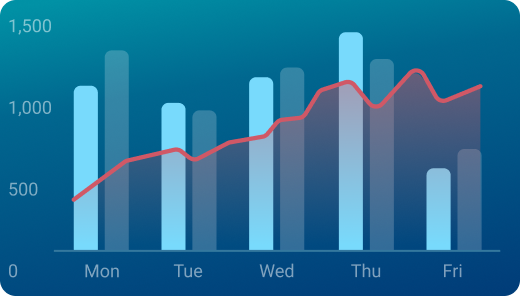Track all of your key business metrics from one screen
GET STARTED
 ProfitWell
Average Revenue Per User by Plan ID
ProfitWell
Average Revenue Per User by Plan ID Average Revenue Per User by Plan ID is a metric that shows the average amount of revenue generated per user for each plan in your subscription-based business.
With Databox you can track all your metrics from various data sources in one place.

Used to show comparisons between values.
Databox is a business analytics software that allows you to track and visualize your most important metrics from any data source in one centralized platform.
To track Average Revenue Per User by Plan ID using Databox, follow these steps:
 Goals
Goals Scorecards
Scorecards Metric Digest
Metric Digest Metric Builder
Metric Builder Data Calculations
Data Calculations Performance Screen
Performance ScreenThis dashboard allows you to track all the key SaaS metrics for your company in real-time.

Report for SaaS revenue growth and churn management, providing detailed insights into key metrics like LTV, ARPU, MRR, churn, upgrades, and revenue retention.

